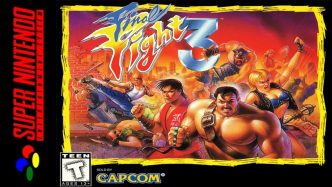F-Zero for the Super Nintendo Entertainment System (SNES) is a pioneering racing game released in 1990. Developed and published by Nintendo, it was one of the launch titles for the SNES and showcased the console’s Mode 7 graphical capabilities, which allowed for the simulation of 3D-like effects on a 2D plane.
In F-Zero, players pilot futuristic hovercars known as “F-Zero machines” across high-speed tracks set in various futuristic environments. The game offers four playable characters, each with their own unique vehicle, stats, and handling characteristics. Players compete against each other and computer-controlled opponents across three different leagues: Knight, Queen, and King. Each league features a set of five tracks that increase in difficulty as players progress.
What set F-Zero apart from other racing games of its time was its fast-paced gameplay, smooth controls, and challenging tracks. The Mode 7 graphics allowed for a sense of depth and perspective as players zoomed through winding courses filled with sharp turns, jumps, and obstacles. The game also featured a unique energy meter mechanic, where players had to manage their vehicle’s energy levels to avoid overheating and maintain maximum speed.
The game’s soundtrack, composed by Yumiko Kanki and Naoto Ishida, is also noteworthy, featuring catchy tunes that complement the high-speed action and futuristic atmosphere.
F-Zero received critical acclaim upon its release, praised for its innovative gameplay, impressive visuals, and adrenaline-pumping racing experience. It quickly became one of the SNES’s standout titles and established a successful franchise for Nintendo, spawning sequels on subsequent consoles.
Even decades after its release, F-Zero remains a beloved classic among racing game enthusiasts and retro gaming fans alike, with its challenging gameplay and iconic futuristic aesthetic continuing to captivate players around the world. Its influence can be seen in countless racing games that followed, making it a timeless classic in the annals of video game history.













